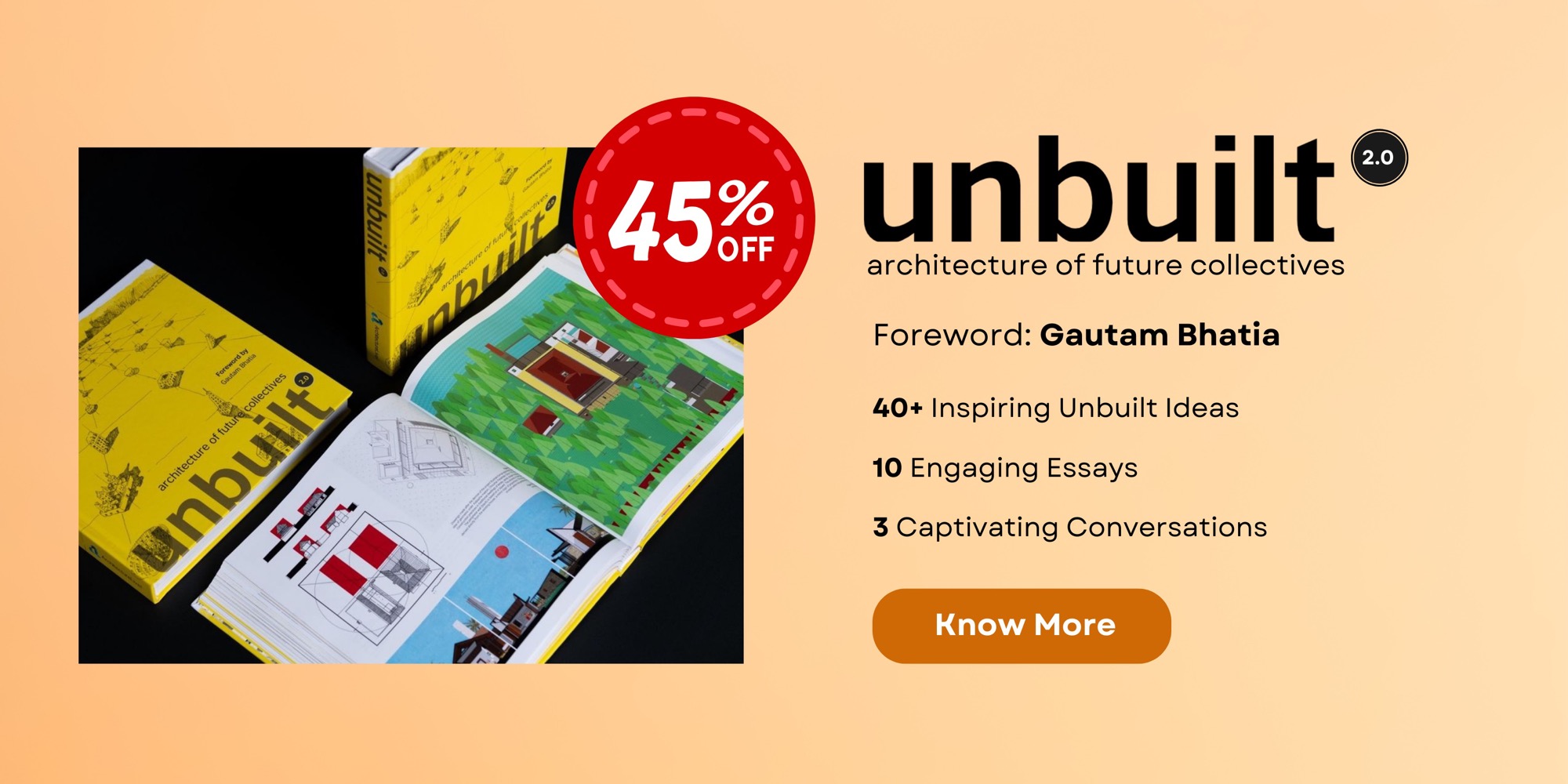Anganwadis function under the government’s Women Development and Child Welfare Department and cater to the needs of these two segments of society. While the space requires to be used on a daily basis as a kindergarten-like learning space for children of 3-6 years, as an institution it is also meant to be a place where numerous other government schemes and initiatives are accessed by women, infants, etc on an occasional, regular or on a one-off basis. This particular project by [ar&de] was to be jointly funded by the government and an NGO named Acton and is on a 7 cents riverside site.
The design of this Anganwadi located at Thiruvambady, Calicut attempts to go beyond being just a kindergarten, as is often conventionally the case, to also become a space for women and the rest of the community. The site was a densely vegetated contoured plot situated on the banks of the Iruvanjippuzha River. By lifting the primary learning space to the first floor, the design gives way for the ground floor to be used for rendering other services, becoming a community space during and after class hours and for the kids to play and run around freely during the rains or play time without getting wet or going into the sun.
The design was developed after detailed and systematic on-site observations and documentation of the functioning of the existing Anganwadi which was operating in a rented premise nearby. The understanding of the challenges and issues experienced by the teacher, helper, mothers and children enabled the design to address them and ensure the smooth functioning of The Anganwadi. The design also attempts to enhance the quality of the training and education provided by additionally enabling the cultivation of desirable habits and activities in the children. For example, various dedicated spaces to organize and display students’ individual belongings and work contributes to instilling a sense of discipline, order, individuality and confidence. The building is designed to have a variety of spaces throughout and therefore a variety of teaching-learning methods and experiences.
A playful entry to draw (especially young new) kids in, a dedicated space for accessing government schemes, like those for pregnant and new mothers (which is rarely provided in anganwadis in these parts), an open kitchen-dining space that makes it easier for the helper to manage and oversee things, outdoor and semi-outdoor learning spaces, spaces for unstructured play and a small performance space for small events with parents are some of the other highlights of the project. Altogether the design is not only child and user-friendly but also helps enhance the functioning and quality of the delivery of the Anganwadi services while giving pride, and dignity and creating a sense of community.
The decision to lift the primary learning space to the first floor was also in order to give the kids the best of the site’s breeze and views of the Iruvanjippuzha river. The lower floor is left mostly open on the sides to become a community space simultaneously or after class hours and on weekends. Additionally, the lower floor also acts as a dedicated space for the delivery of services as a part of the government schemes along with a waiting space and toilet. The regular presence of the community also ensures the kids, their work and their belongings are secure upstairs.
The Anganwadi, for children, is a first step towards discovering the world away from their homes. The spaces and elements at The Angandwadi were designed to specifically help the child become independent. Some of the unique aspects of the design are elements like the dedicated shelf space for children alongside the main learning space where they can keep their belongings, and access them without the help of the teacher/helper, and the Bay window on the first floor overlooking the river.



The height of this window is appropriate only for children becoming a playful space in itself. Other elements such as shelves and the main door are dimensioned in a way that makes it very easy and fun for kids to use.
Renders















